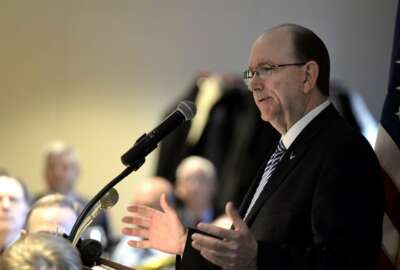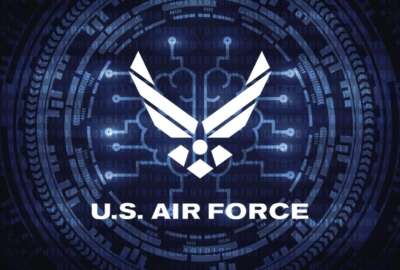
Air Force lays out plan for cyber warfare over next 10 years
The new strategy prioritize cyber investments and resources.
A new plan from the Air Force spells out where the service will put its cyber resources, priorities and investments over the next 10 years, as it aims to further project its power from cyberspace.
“The Air Force Cyber Warfare Flight Plan charts out where we are going to go and that we are going to hopefully innovate and inspire and actually turn to fielding,” Lt. Gen. Dash Jamieson, Air Force deputy chief of staff for intelligence, surveillance, reconnaissance and cyber effects operations, said Wednesday. “Flight plans and strategies are about prioritization and putting our money where our mouth is in resourcing. We actually have a signed plan that says ‘Let’s talk about it upfront, let’s invest in our people, lets invest in our training, let’s invest in our capabilities.’”
The Cyber Flight Plan is scant on public details. The Air Force boiled down the plan to a single trifold brochure, which is all the service intends to publish in an unclassified format, she said.
“There is a more detailed plan at different classification levels…but that will not be out for public consumption, because we are in persistent and continuous competition with our adversaries who would want to know what is our roadmap,” she told reporters.
But it does identify seven areas of importance and three lines of effort.
One of the most emphasized of those is human capital, which is an area of importance and part of the foundational capabilities line of effort.
Jamieson explained as part of that effort the Air Force honed its cyber career tracks to give officers more control over their development.
One field is for offensive and defensive operators and the other is for expeditionary warfighting communications and communications maintenance.
“There are hundreds of ways of how you can develop, train and chart your own path,” Jamieson said at an Air Force Association event in National Harbor, Md. “Every airman deserves the ability and right to define success for them.”
By the end of September, cyber officers will input their experience, training and desire to choose which career path they prefer.
The Air Force is working on the same thing for enlisted and civilian cyber employees.
“The plan starts with human capital,” said Brig. Gen. Bradley Pyburn, Air Force director of cyberspace operations and warfighter communications. “We have to be able to recruit, retain and develop talent in this battle space.”
Other areas of importance include accelerating emerging technologies, coming up with low cost options for defensive cyber operations, expanding offensive cyber capabilities and providing resilient communications.
The other lines of effort focus on emerging technologies and readiness.
“With emerging technology, the technology we have today is not going to be the technology we have next week, next month or tomorrow and we have to be agile and we have to move quickly,” Pyburn said.
The readiness effort stresses modernizing capabilities and growing offensive and defensive cyber operation capabilities.
The plan comes as the service plans to merge its 24th Air Force and 25th Air Force — Air Forces Cyber and Air Force Intelligence, respectively — into the 16th Air Force. The 16th Air Force will also be known as Air Force Information Warfare. Maj. Gen. Timothy Haugh is nominated to lead the new organization.
Air Force officials say the 16th will bring cyber and intelligence experts under one roof so they can better act in unison and share information quicker.
“The merger of 24th and 25th is the next step in leveraging and integrating new ideas and technologies to both improve the quality and speed of decision-making and deliver improved effects for commanders,” said Gen. Mike Holmes, commander of Air Combat Command. “This formalizes the existing collaborations between cyber and ISR while expanding our competitive space in electronic warfare and information operations, ultimately improving readiness and increasing lethality across the range of military operations — all vital to the success of multi-domain warfighting in the 21st century.”
Copyright © 2025 Federal News Network. All rights reserved. This website is not intended for users located within the European Economic Area.
Scott Maucione is a defense reporter for Federal News Network and reports on human capital, workforce and the Defense Department at-large.
Follow @smaucioneWFED





